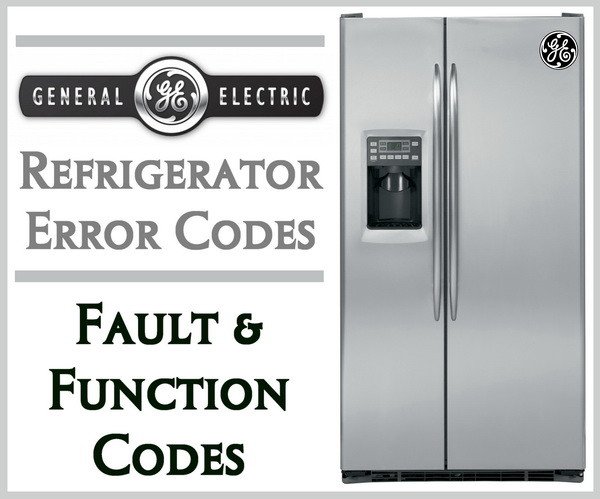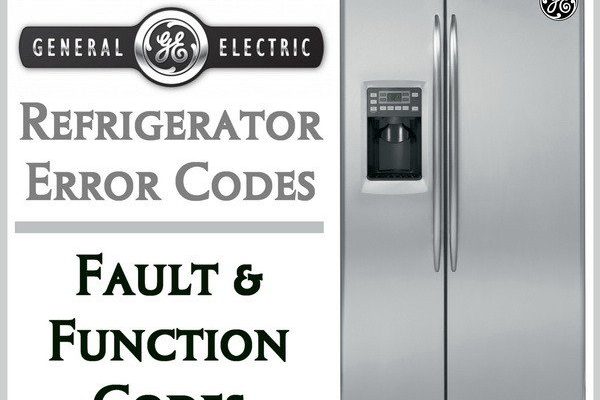
Error codes on your refrigerator are a bit like the warning lights on your car’s dashboard. They signal that something isn’t quite right under the hood. In the case of a GE refrigerator, the “HE” error code is an important signal that your appliance’s heater is on the fritz. Think about it like a hiccup in the fridge’s defrost cycle, where the heater that should be warming up to melt away frost is not functioning as it should. This can lead to a build-up of ice, causing your fridge compartments to become less efficient over time. Let’s dive deeper to understand why this happens and what you can do about it.
Understanding the “HE” Error Code
The “HE” error code you see on your GE refrigerator stands for “Heater Error.” Essentially, it indicates a problem with the defrosting process, which is crucial for maintaining the appliance’s efficiency and performance. The defrost heater is an integral part of your refrigerator’s operation. Its role is pretty straightforward: it prevents frost from building up and stopping the cold air from circulating freely. When the heater fails, the opposite happens—frost accumulates, which can prevent the freezer from reaching optimal temperatures.
Imagine your freezer as an icebound cave blocking the entrance to a frosty wonderland. Without the defrost heater, your cave fills with solid ice that needs to be removed regularly. This heater error can stem from several sources, including a malfunctioning thermostat, a broken defrost timer, or faulty wiring. Each of these components plays a critical role in ensuring your fridge can defrost properly, letting it do its job day in and day out without interruption.
Here’s the deal: Ignoring the “HE” code can lead to more significant issues, like ineffective cooling or even food spoilage. You wouldn’t want your ice cream melting or, even worse, your refrigerated items spoiling due to inconsistent temperatures. So, knowing how to address this error promptly can save you time, money, and a whole lot of frustration.
Causes of the “HE” Error Code
Now that we’ve uncovered what the “HE” code means, you might be wondering why it’s appearing on your refrigerator. Multiple culprits could be at play, each as critical as the other. First on the list could be a blown defrost heater. Think of this component as a small yet powerful device designed to keep the ice at bay. When it’s not working, the cold can overtake your freezer compartment.
Another possible cause is a faulty defrost thermostat. The thermostat acts like a vigilant guardian, keeping track of the freezer’s temperature and signaling to the heater when to start melting the excess frost. If this part is defective, it can throw the entire defrost process out of balance. Imagine having a faulty watch that makes you late for every appointment—that’s how critical timing is with these components.
Lastly, a malfunction in the defrost timer can also trigger the “HE” code. The timer is like the conductor of an orchestra, ensuring that the heater kicks on and off at the right intervals. If it’s out of sync, the defrost routine can go astray, leading to ice build-up. Recognizing these potential issues is the first step toward troubleshooting and resolving them before they worsen.
Fixing the “HE” Error Code
Okay, so you’ve identified the pesky “HE” code. Now what? Fixing it may sound intimidating, but with some guidance, it’s a task you can handle—or at least understand well enough to talk it through with a professional. The first move is to check the defrost heater for continuity using a multimeter. If it’s not conducting electricity, a replacement is likely in order.
Next, inspect the defrost thermostat and timer. These components are often located near the evaporator coils, shrouded by the appliance’s inner panels. We know it sounds like hunting for a needle in a haystack, but locating these components is crucial for a thorough check-up. If either the thermostat or timer is faulty, they’ll need to be swapped out for your fridge to defrost effectively again.
If this all sounds a bit like rocket science, it’s perfectly okay to seek professional help. Repair technicians are like the translators of this mysterious appliance language, ready to decode the problem with expertise and efficiency. But if you’re feeling adventurous and handy, replacing these parts can be a rewarding DIY project—just be sure to unplug your fridge and consult your manual first!
Preventing Future Errors
Once you’ve resolved the “HE” code issue, there’s always the looming question of how to prevent it from happening again. Fortunately, regular maintenance can go a long way. Like brushing your teeth to prevent cavities, regularly inspecting and cleaning your refrigerator can help stave off potential problems.
Make it a habit to check the door seals to ensure they’re tight and free of debris. Faulty seals can let warm air seep in, leading to frost problems and placing extra burden on the defrost system. It’s also wise to avoid overpacking your freezer, which can block air vents and lead to poor circulation, similar to a traffic jam in a narrow street.
Lastly, schedule periodic inspections of your fridge’s components, especially if it’s a bit older. By keeping an eye on parts like the defrost heater and thermostat, you can spot wear and tear early and address it before an error code ever flashes. With a little bit of forethought and maintenance, you can keep your GE refrigerator running smoothly, error-free, and ready to handle all your chilling needs.
